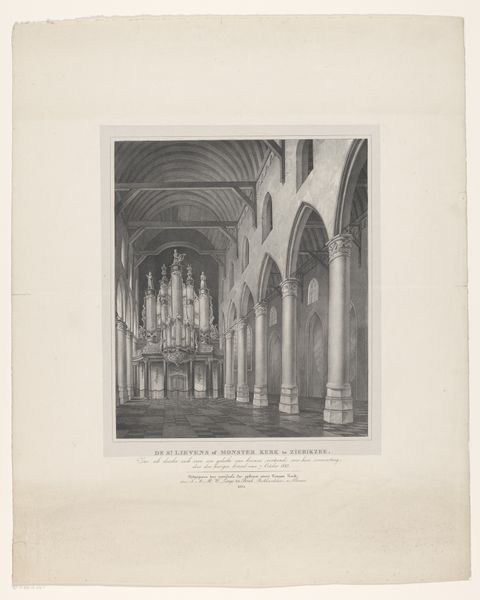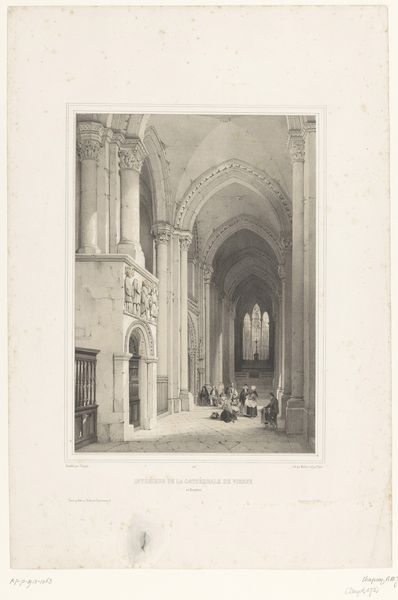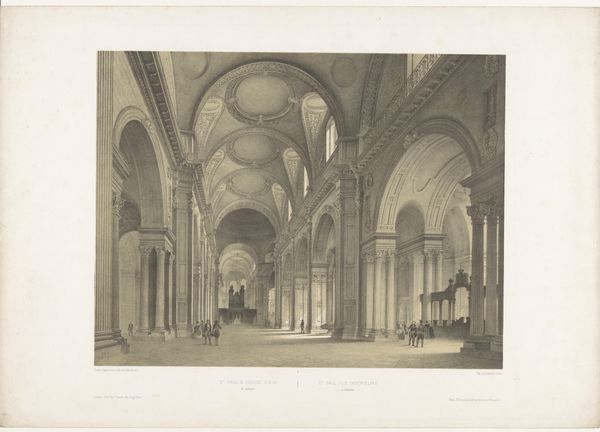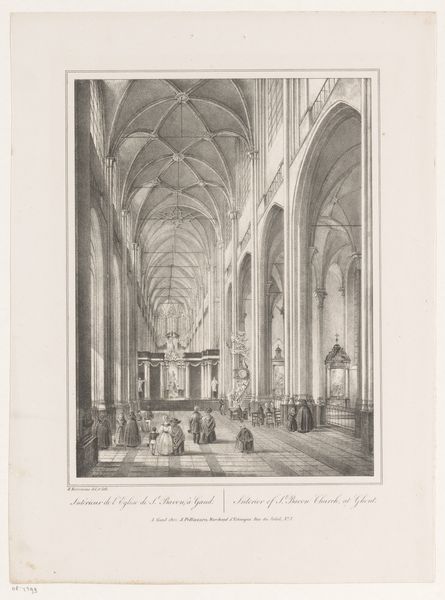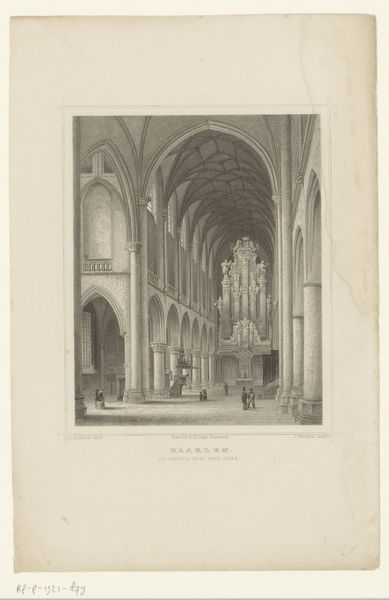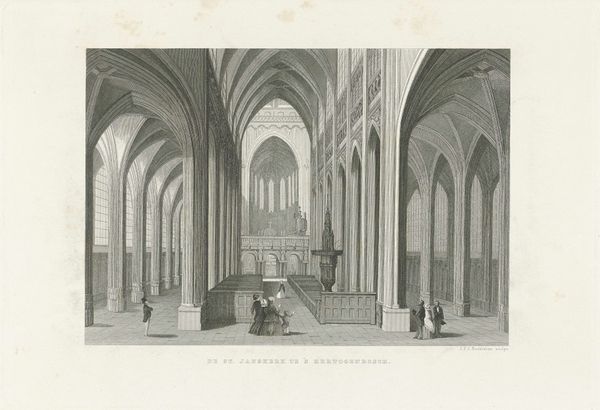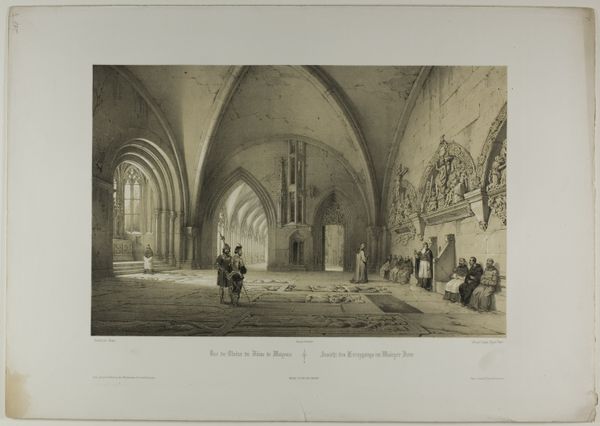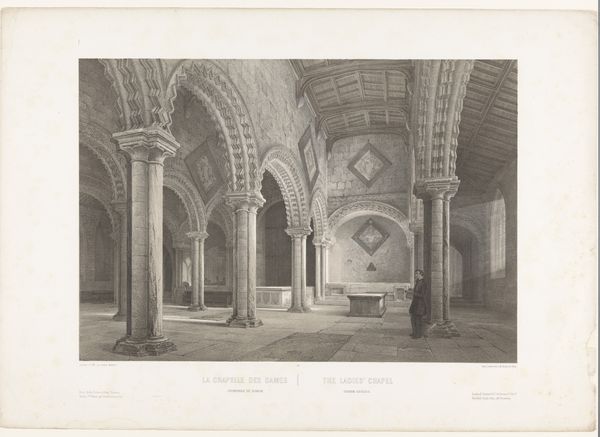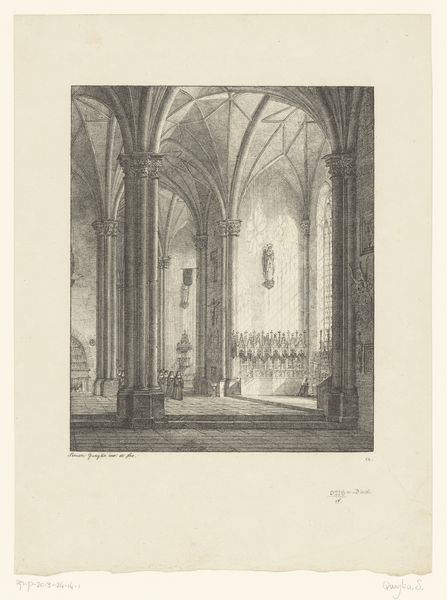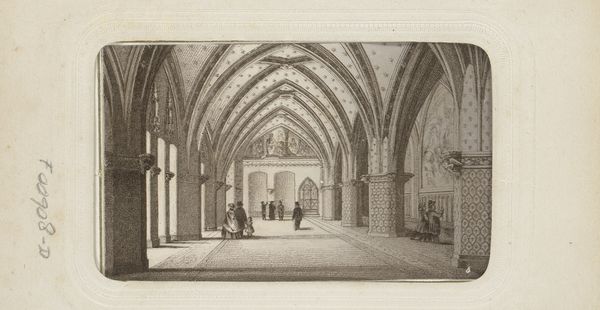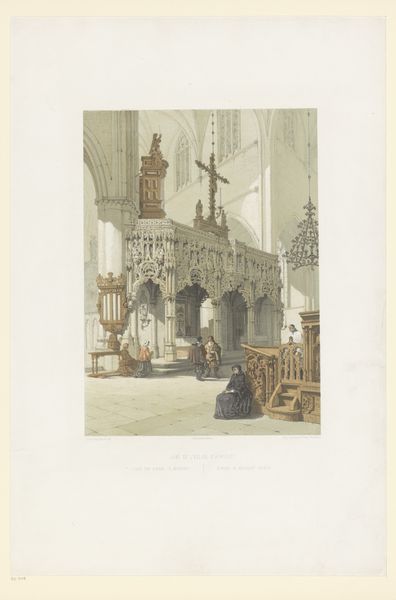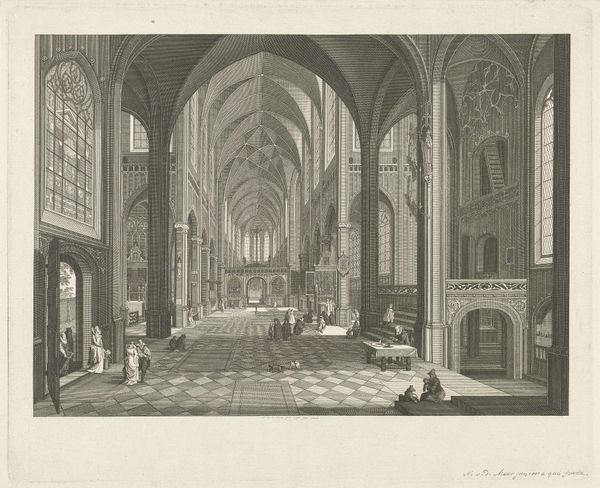
Nieuwe Kerk te Delft met het praalgraf van Willem I, prins van Oranje 1779 - 1834
0:00
0:00
print, engraving, architecture
#
neoclacissism
# print
#
landscape
#
engraving
#
architecture
Dimensions: height 175 mm, width 248 mm
Copyright: Rijks Museum: Open Domain
Curator: Looking at this print of the Nieuwe Kerk in Delft, created between 1779 and 1834, what stands out to you? Editor: The sheer scale is impressive! And the starkness, that checkered floor leading to the monument… it’s almost theatrical. The architecture feels designed to make one feel very, very small. Curator: Indeed. It depicts the tomb of William I, Prince of Orange. Consider the neoclassical architectural elements, reproduced via engraving. How might its production relate to societal shifts during that era? Editor: Engraving made it widely accessible, almost democratic in distribution. Remember, William I was a pivotal figure in the Dutch revolt. By creating prints of his memorial, they are in a way democratizing the memory of their cultural history. Curator: Exactly. The production of prints such as these helped to disseminate Neoclassical aesthetics but also fostered a sense of national identity, turning a memorial into a widely available symbol. What impact did this process, transforming monument to printed image, have on art consumption? Editor: By circulating this image, prints blur the boundaries between high art and practical art for a larger viewing audience, increasing nationalism by connecting people through imagery. This piece itself acts a piece of propaganda. It reminds the viewer, or should I say, consumer of the revolution. Curator: Precisely. This print allows for a closer examination of the craft involved, but also highlights the tension between individual artistic expression and mass-produced imagery for sociopolitical motives. Editor: Examining the creation process definitely reframes it. I initially focused on the monumentality and now appreciate the blend of commemoration and calculated visual politics within the community. Curator: The shift in how we perceive the piece is the exciting part of revisiting historical works through a contemporary, critical eye. It helps reveal not only how images represent, but also *do* the work in society. Editor: Absolutely, digging into materials, methods and contexts shows the layers in how a printed memory became accessible and politicized.
Comments
No comments
Be the first to comment and join the conversation on the ultimate creative platform.
